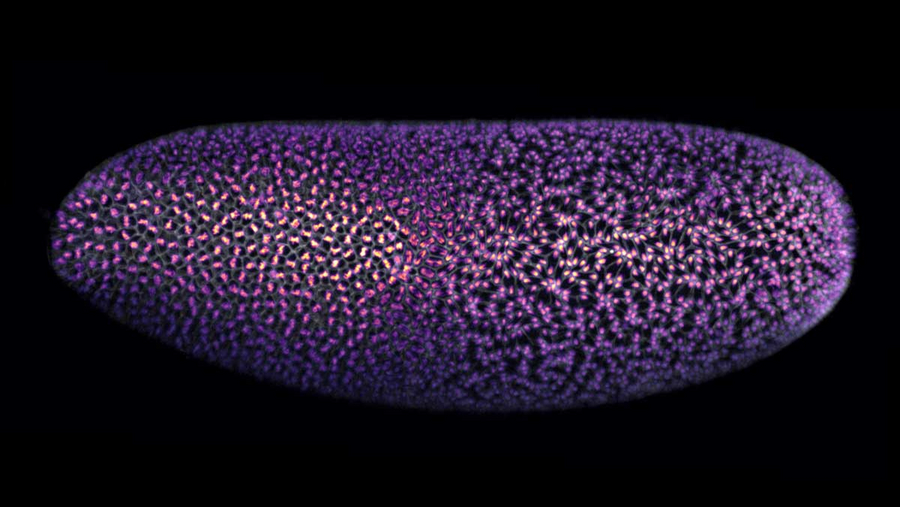
© Bruno C. Vellutini / MPI-CBG
Nikon Instruments Inc. announced the winners of the 14th annual Nikon Small World in Motion Video Competition today. This year’s first place prize was awarded to a video from Bruno C. Vellutini, a postdoctoral researcher in the group of Pavel Tomancak at the Max-Planck Institute of Molecular Cell Biology and Genetics (MPI-CBG) in Dresden, Germany.
The video reveals the dynamic processes of fly embryogenesis, crucial for uncovering genetic pathways that mirror those in humans and other mammals, with applications for cancer research, birth defects, and potential treatment development. This year, the video competition received 370 video entries from 40 countries.
The 30-second video shows an early embryo of the fruit fly Drosophila melanogaster going through the first nuclei divisions and gastrulation – a process in which animal embryos undergo tissue flows and folding events that transform a simple monolayer of cells into a complex multi-layered structure called gastrula. The movie starts at the tenth mitotic cycle, when the nuclei are already at the surface of the embryo, and continue to divide in synchronized waves. At the fourteenth cycle, at about 11 seconds into the movie, the embryo cellularizes, with each nucleus being encapsulated by cell membranes. When this happens, the process of gastrulation begins. Disruptions in these processes, such as the epithelial-mesenchymal transition—a process normal in embryogenesis but problematic when occurring unexpectedly—are known to contribute to the invasiveness of lung, liver, and breast cancer.
Bruno C. Vellutini explains, “I am honored that my video is the winner in the Nikon Small World in Motion Competition. The potential of microscopes to see beyond the limitations of our human eyes amazes me. My passion for photomicrography was sparked by the ability of microscopes to capture and observe stunning microscopic phenomena through pictures or movies, to make new discoveries, and to share this captivating world with others. I think my video can be interesting for everyone, as fruit fly embryos can be found in our homes. This video reveals that the fascinating dynamics of cells and tissues are happening every day in the most mundane living beings around us.”
“The beauty of basic research in biology,” says Dr. Vellutini, “is that what we learn in one organism is often applicable to others and has the potential to contribute to the understanding of human diseases.”
Bruno C. Vellutini is a biologist and researcher working in the field of evolutionary developmental biology. He studies how different embryos build their body parts to understand the evolution of animal diversity. Before working at the MPI-CBG, Bruno graduated from the University of São Paulo. He did his MSc in Zoology at the Center for Marine Biology (CEBIMar/USP) and his PhD in Molecular and Computational Biology at the Sars International Centre for Marine Molecular Biology of the University of Bergen.
Second place was awarded to Jay McClellan for his video of water droplets evaporating from the wing scales of a peacock butterfly (Aglais io). The final product used image stacking and a custom CNC motion control system to handle evaporating droplets and ensure smooth, rapid image capture.
Third place was awarded to Dr. Jiaxing Li for his video of an oligodendrocyte precursor cell in the spinal cord of a zebrafish.
Nikon's Small World in Motion encompasses any movie or digital time-lapse photography taken through the microscope. Entries are judged by an independent panel of experts who are recognized authorities in the area of photomicrography and photography. These entries are judged on the basis of originality, informational content, technical proficiency, and visual impact.
For additional information, please visit www.nikonsmallworld.com